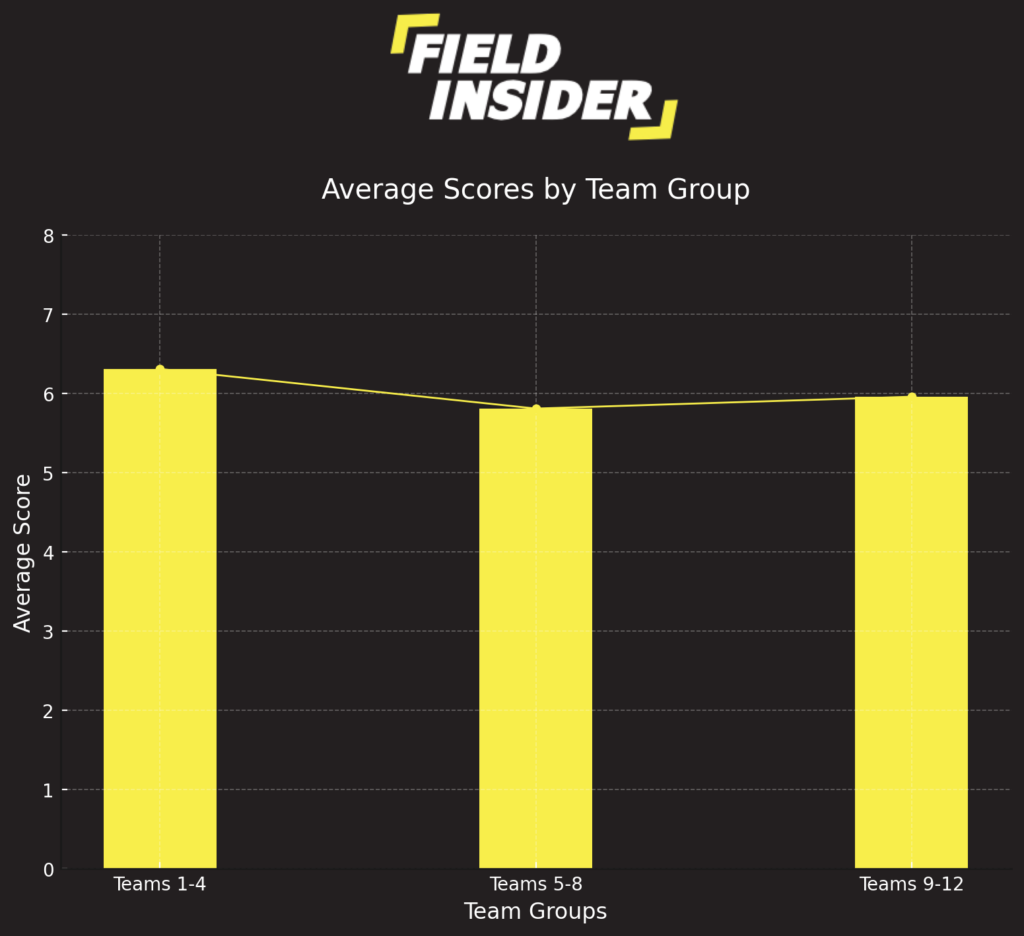Improve Your Team Cohesion In Football: Complete Guide
Team cohesion is pivotal in football, acting as the crucial link that transforms a group of individual players into a synchronized unit. The success of a football team often hinges on its level of cohesion, influencing both the execution of strategic plays and the overall team atmosphere.
This guide delves into the essence of team cohesion, exploring its definition, significance, and the various strategies for assessing, building, and maintaining it effectively. We aim to provide football teams with the necessary tools to enhance their cohesion and, consequently, their performance on the field.
Key takeaways
| Aspect | Key Takeaways |
|---|---|
| Understanding Cohesion | Team cohesion involves both task (goal-oriented) and social elements, crucial for team performance. |
| Assessment Techniques | Regular evaluation through observation, player interviews, and specific tools is vital for understanding cohesion levels. |
| Building Strategies | Crucial strategies include establishing clear goals, promoting open communication, and encouraging teamwork during training. |
| Maintenance Techniques | Maintaining cohesion involves ongoing team-building activities, reinforcing a positive team culture, and continuous support. |
| Case Studies | Analyzing successful teams like those employing tiki-taka or teams like Real Madrid CF offers practical insights into fostering unity. |
Understanding Team Cohesion

Definition and Components
Team cohesion in football encapsulates both task cohesion and social cohesion. Task cohesion refers to the shared commitment of team members towards achieving collective goals. This is often seen in how well team members work together during matches to execute strategies.
the other hand, social cohesion relates to the personal bonds that form between players, which can significantly enhance trust and communication on the pitch. These components are essential for creating a unified team that can face various challenges together.
Influencing Factors
The factors that influence team cohesion include leadership, player personalities, and the overarching team culture. Leadership plays a pivotal role, as leaders guide the tone and ethos within the team.
The personalities within the team also contribute to the cohesion dynamic, as diverse personalities can either harmonize well or lead to friction. Moreover, the established team culture—whether it is inclusive and supportive or competitive and individualistic—shapes how players interact and bond.
Benefits
The benefits of strong team cohesion are manifold. Teams that enjoy high levels of cohesion experience better communication, which is crucial during high-pressure moments in matches. Such teams also demonstrate higher levels of mutual support, which can sustain motivation and morale.
Additionally, cohesive teams are more resilient, enabling them to recover from setbacks more effectively. This resilience can lead to better overall performance, turning individual talents into a powerful collective force on the field.
Assessing Your Team’s Cohesion
Regular assessment of team cohesion is crucial for identifying strengths and areas needing improvement within a football team.
Methods of Evaluation
Evaluating team cohesion can be approached through various methods such as direct observation during games and practices, conducting player interviews to gather insights on team dynamics, and utilizing specialized psychological assessment tools.
These methods help in understanding both the overt and subtle aspects of team interactions and relationships. They provide a comprehensive view of how well team members are connecting both on and off the field.
Signs of Cohesion
Identifying signs of both strong and weak team cohesion is essential for timely interventions. Strong cohesion is evident when players communicate effectively, show mutual respect, and consistently work together towards team goals.
Weak cohesion can be spotted through signs such as frequent misunderstandings, visible cliques, or recurring conflicts among players. These indicators help coaches and management to pinpoint issues that may need addressing to foster a more cohesive team environment.
Importance of Monitoring
Continuous monitoring of team cohesion is vital as it allows for the proactive management of team dynamics. Regular assessment helps in making informed decisions regarding training focus, the necessity for team-building activities, and conflict resolution strategies.
By keeping a close eye on how team cohesion develops, coaches can better support their teams to achieve peak performance and minimize potential disruptions that could affect team harmony and success.
Strategies for Building Team Cohesion

Establishing Clear Team Goals and Objectives
Clear goals and objectives are foundational for team cohesion. Setting specific, measurable, achievable, relevant, and time-bound (SMART) goals ensures that all team members are aligned and motivated towards common objectives.
This alignment helps to synchronize efforts and enhances the collective focus of the team, crucial for achieving success on the field.
Promoting Open Communication Among Players and Coaching Staff
Open communication is essential in building and maintaining team cohesion. Encouraging honest and respectful dialogue between players and coaching staff helps to prevent misunderstandings and builds trust.
Regular team meetings, feedback sessions, and one-on-one discussions are effective ways to maintain this open line of communication. These interactions foster a supportive environment where players feel valued and understood.
Cultivating Trust and Camaraderie Within the Team
Trust and camaraderie are the bedrock of a cohesive team. Activities that encourage personal bonding and mutual respect among team members can greatly enhance social cohesion.
Team outings, shared meals, or collaborative charitable projects are just a few examples of how teams can build deeper relationships. Such activities help in breaking down barriers and developing a sense of brotherhood among players.
Encouraging Teamwork and Collaboration During Training Sessions
Implementing drills and exercises that require teamwork and collaboration during training sessions can strengthen task cohesion. Exercises that simulate match scenarios requiring coordinated efforts can improve tactical understanding and on-field chemistry.
This practical application of teamwork helps players to instinctively know their teammates’ movements and strategies during competitive matches.
Addressing Conflicts and Resolving Disputes Effectively
Conflict resolution is crucial in maintaining team cohesion. Effectively managing disputes through mediation and constructive dialogue ensures that conflicts do not escalate and disrupt team harmony.
Establishing clear protocols for conflict resolution and promoting a culture of forgiveness and understanding are vital for sustaining a positive team environment. This approach helps to maintain focus on collective goals rather than individual disagreements.
Impact of Team Cohesion on Soccer Performance
The bar chart illustrates the findings from the study, “Team cohesion and performance during a university soccer championship: Two sides of the coin.” It compares the average scores of different team groups.

Teams 1-4, which exhibited higher cohesion, achieved the highest scores, averaging 6.31. Teams 5-8 scored slightly lower with an average of 5.81, while Teams 9-12, potentially reflecting lower cohesion levels, scored the lowest at 5.96.
This visual underscores the positive correlation between team cohesion and performance in football.
Techniques for Maintaining Team Cohesion
Implementing Team-Building Activities and Exercises
Regular team-building activities are crucial for reinforcing the bonds formed during the initial stages of team development. These activities can range from tactical training sessions to informal social gatherings.
Engaging in exercises that promote mutual understanding and cooperation keeps the team’s social bonds strong, crucial for maintaining high morale and unity.
Fostering a Positive Team Culture and Environment
A positive team culture is vital for sustained cohesion. This culture should emphasize respect, inclusivity, and collective success.
Celebrating individual and team achievements, acknowledging efforts, and maintaining an environment where everyone feels secure and valued are essential practices that help sustain a positive atmosphere.
Providing Support and Encouragement to Team Members
Support and encouragement from both peers and coaching staff play a significant role in maintaining team cohesion. Regular encouragement helps to build confidence among team members, promoting a sense of belonging and loyalty to the team.
Supportive interactions, especially during challenging times, reinforce the team’s resilience and collective strength.
Continuously Reinforcing Team Values and Identity
It is important to regularly reinforce the team’s values and identity to keep all members aligned with the team’s core principles and goals. This can be achieved through regular team meetings, visual reminders in the team’s facilities, and symbolic gestures that embody the team’s ethos.
Such continuous reinforcement helps to keep the team focused and united in pursuit of their shared objectives.
Case Studies: Successful Team Cohesion

Analysis of Renowned Football Teams Known for Their Strong Cohesion
One prominent example is FC Barcelona during the era of Pep Guardiola’s management. The team was famed for its tiki-taka style of play, which required extremely high levels of task cohesion.
The players exhibited a deep understanding of each other’s movements, allowing them to maintain possession and control the pace of the game effectively. This style of play not only highlighted their tactical cohesion but also demonstrated their strong social bonds.
Examination of Specific Strategies and Practices Employed by Successful Teams
Another example is the German national team during the 2014 FIFA World Cup. The team’s success was largely attributed to their comprehensive preparation, which included psychological training aimed at enhancing team cohesion.
They employed clear communication, mutual respect, and shared leadership roles, which helped in building a resilient team capable of winning the world title. Their strategic use of team retreats and group psychological sessions were key in forging a strong, unified team identity.
Lessons That Can Be Learned and Applied to Other Football Teams
These examples show that successful team cohesion stems from both strategic preparation and the fostering of interpersonal relationships. Teams looking to replicate this kind of success should focus on building a culture that values team unity as much as technical and tactical skills.
Moreover, the importance of leadership—both from the coaching staff and within the team—cannot be overstated, as it is crucial for guiding the team’s collective ethos and ensuring that every player is aligned with the team’s objectives.
Conclusion
This guide has outlined the crucial role of team cohesion in achieving football success. We have explored its definition, assessment methods, building strategies, maintenance techniques, and real-life case studies.
Emphasizing the significant impact of cohesion, this comprehensive exploration provides teams with actionable strategies to enhance their performance. Coaches and players alike are encouraged to implement these insights to foster a more unified and successful team.








